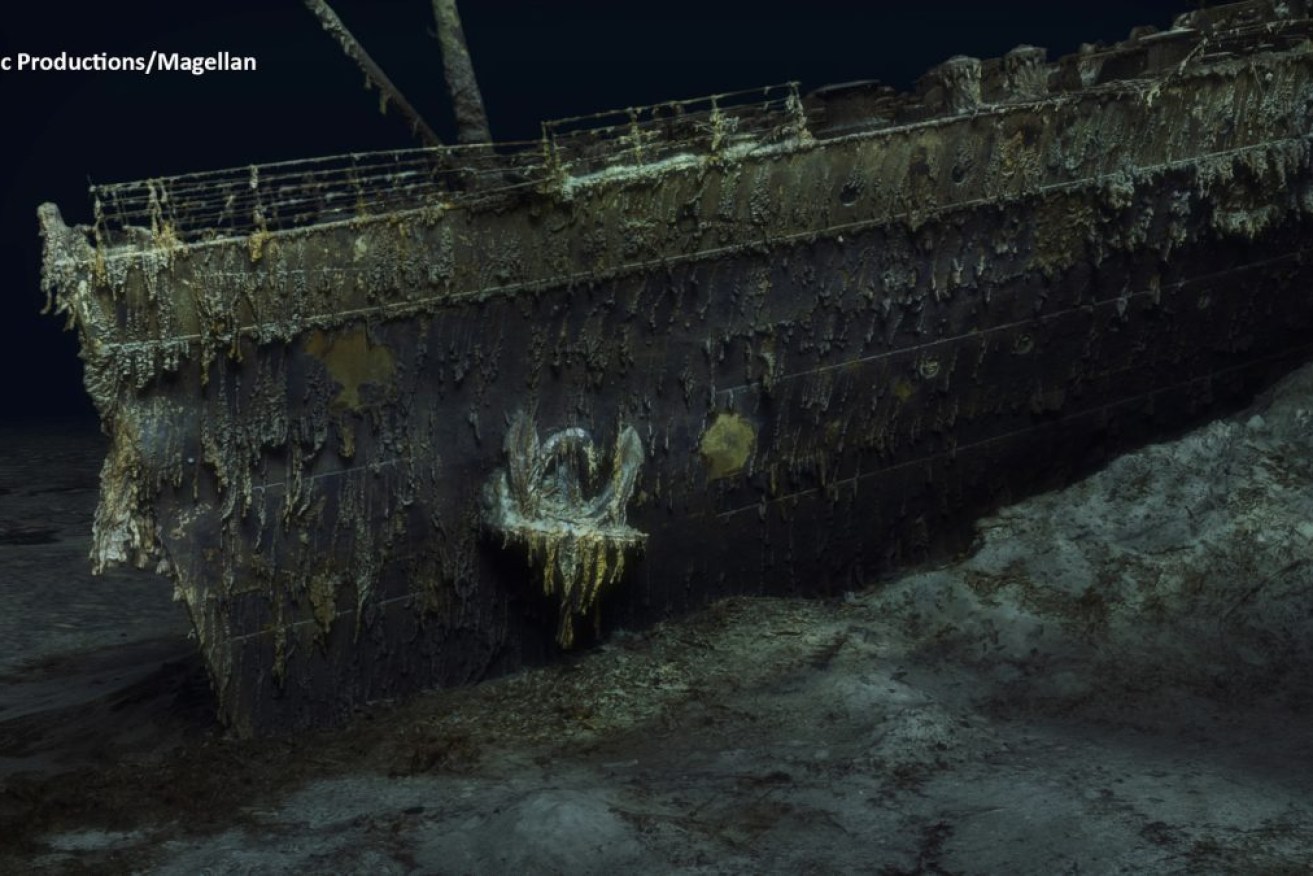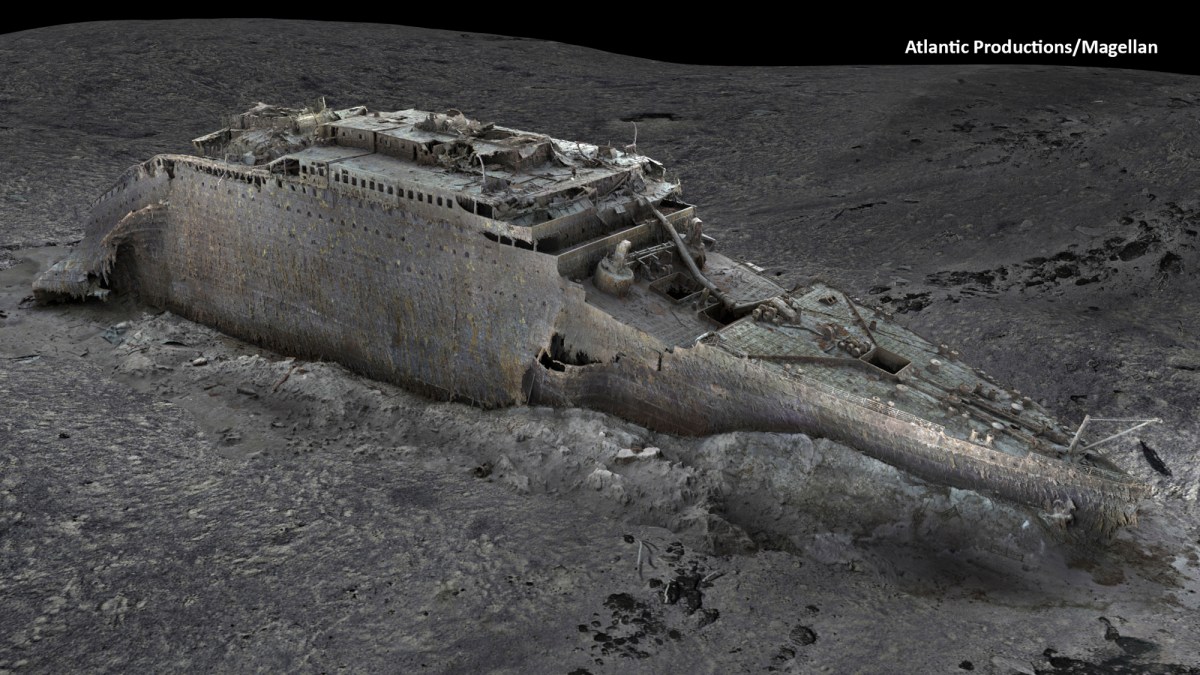Titanic 3D scan throws new light on shipwreck
Deep-sea researchers have completed the first full-size digital scan of the Titanic, showing the entire wreck in unprecedented detail and clarity.

The bow of the Titanic using deep-sea mapping for a full-size digital scan. Image: Atlantic/Magellan via AP
Using two remote operated submersibles, a team of researchers spent six weeks last northern summer in the North Atlantic mapping the whole shipwreck and the surrounding 5km debris field, where personal belongings of the ocean liner’s passengers such as shoes and watches were scattered.
Richard Parkinson, founder and chief executive of deep-sea exploration firm Magellan, estimated that the resulting data – including 715,000 images – is 10 times larger than any underwater 3D model ever attempted before.
“It’s an absolutely one-to-one digital copy, a ‘twin’ of the Titanic in every detail,” Anthony Geffen, head of documentary maker Atlantic Productions, said.

Image: Atlantic/Magellan via AP
The Titanic was on its maiden voyage from Southampton, England, to New York City when it hit an iceberg off Newfoundland in the North Atlantic on April 15, 1912.
The luxury ocean liner sank within hours and about 1500 people died.
The wreck, discovered in 1985, lies 3800 metres under the sea, about 700km off the coast of Canada.
Geffen says previous images of the Titanic were often limited by low light levels and only allowed viewers to see one area of the wreck at a time.
He said the new 3D model captures both the bow and stern section, which had separated upon sinking, in clear detail – including the serial number on the propeller.
Researchers have spent seven months rendering the large amount of data they gathered, and a documentary on the project is expected to come out next year.
But beyond that, Geffen says he hopes the new technology will help researchers work out details of how the Titanic met its fate and allow people to interact with history in a fresh way.
“All our assumptions about how it sank, and a lot of the details of the Titanic comes from speculation, because there is no model that you can reconstruct or work exact distances,” he said.
“I’m excited because this quality of the scan will allow people in the future to walk through the Titanic themselves… and see where the bridge was and everything else.”
-AAP




